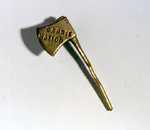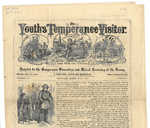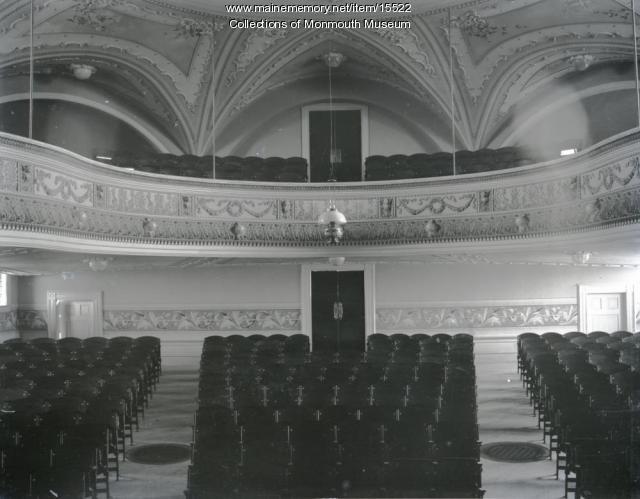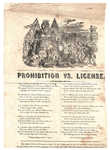Keywords: Historic homes
- Historical Items (4213)
- Tax Records (6)
- Architecture & Landscape (716)
- Online Exhibits (198)
- Site Pages (635)
- My Maine Stories (17)
- Lesson Plans (7)
Online Exhibits
Your results include these online exhibits. You also can view all of the site's exhibits, view a timeline of selected events in Maine History, and learn how to create your own exhibit. See featured exhibits or create your own exhibit
Exhibit
Putting Men to Work, Saving Trees
While many Mainers were averse to accepting federal relief money during the Great Depression of the 1930s, young men eagerly joined the Civilian Conservation Corps, one of President Franklin Roosevelt's most popular programs. The Maine Forest Service supervised the work of many of the camps.
Exhibit
Evergreens and a Jolly Old Elf
Santa Claus and evergreens have been common December additions to homes, schools, businesses, and other public places to America since the mid nineteenth century. They are two symbols of the Christian holiday of Christmas whose origins are unrelated to the religious meaning of the day.
Exhibit
Maine and the Civil War - Togus Veterans' Hospital view, 1885
"… title of this view is, "Eastern Branch, National Home for Disabled Volunteer Soldiers, Togus, Me." View additional information about this item on…"
Exhibit
Rum, Riot, and Reform - Quenching the Thirst
"… for Cartographic Education National Soldier Home: Birds Eye View of Togus Beck and Pauli, Lithographers, 1878 Lithograph Collections of Maine…"
Exhibit
Rum, Riot, and Reform - Women Leaders and Temperance
"the Saloon W.C.T.U., ca. 1900 Postcard Collections of Maine Historical Society Temperance march in Bangor, 1909Courtesy of Henry Gartley, an…"
Exhibit
Rum, Riot, and Reform - Temperance Membership
"… depicted as brave young heroines fighting for home and family. The Woman's Christian Temperance Union was founded in Cleveland in December of 1874…"
Exhibit
Throughout New England, barns attached to houses are fairly common. Why were the buildings connected? What did farmers or families gain by doing this? The phenomenon was captured in the words of a children's song, "Big house, little house, back house, barn," (Thomas C. Hubka <em>Big House, Little House, Back House, Barn, the Connected Farm Buildings of New England,</em> University Press of New England, 1984.)
Exhibit
"… for listening to music without leaving the home. Use the navigation tool on the left to explore the exhibition."
Exhibit
Music in Maine - Opera, Orchestras and Stages
"Lucy Nicolar and Mary Ranco, Indian Island, ca. 1900Maine Historical Society Aunt Lu utilized her connections to raise the educational standards for…"
Exhibit
Maine's frozen rivers and lakes provided an economic opportunity. The state shipped thousands of tons of ice to ports along the East Coast and to the West Indies that workers had cut and packed in sawdust for shipment or later use.
Exhibit
Black soldiers served in Maine during World War II, assigned in small numbers throughout the state to guard Grand Trunk rail lines from a possible German attack. The soldiers, who lived in railroad cars near their posts often interacted with local residents.
Exhibit
Capturing Arts and Artists in the 1930s
Emmie Bailey Whitney of the Lewiston Journal Saturday Magazine and her husband, noted amateur photographer G. Herbert Whitney, captured in words and photographs the richness of Maine's arts scene during the Great Depression.
Exhibit
Music in Maine - Longfellow Family Music
"She lived in the Wadsworth-Longfellow House until her death in 1901, bequeathing the house and property to the Maine Historical Society to honor the…"
Exhibit
Public education has been a part of Maine since Euro-American settlement began to stabilize in the early eighteenth century. But not until the end of the nineteenth century was public education really compulsory in Maine.
Exhibit
In Canada During the Civil War
One surviving letter from the family of Francis Pratt to the young man who was in Canada in 1865 suggests that going to Canada to escape military service during the Civil War was not unheard of. The letter also suggests money was removed to Canada to protect it.
Exhibit
Melting snow, ice, warmer temperatures, and rain sometimes bring floods to Maine's many rivers and streams. Floods are most frequent in the spring, but can occur at any season.
Exhibit
"… rural Maine congregations and for personal use in homes because they require little maintenance and are portable."
Exhibit
A Snapshot of Portland, 1924: The Taxman Cometh
In 1924, with Portland was on the verge of profound changes, the Tax Assessors Office undertook a project to document every building in the city -- with photographs and detailed information that provide a unique view into Portland's architecture, neighborhoods, industries, and businesses.
Exhibit
Scarborough: They Answered the Call
Scarborough met every quota set by the state for supplying Civil War soldiers for Union regiments. Some of those who responded became prominent citizens of the town.
Exhibit
Rum, Riot, and Reform - A Call to Temperance
"X Come Home Father, mid 19th century Ink on paper Collections of Maine Historical Society Coll. 1863, Box 3 This verse summarizes the hope of…"
Exhibit
The astronomical arrival of winter -- also known as the winter solstice -- marks the year's shortest day and the season of snow and cold. It usually arrives on December 21.
Exhibit
"The First Music of Maine Hand drum by James Eric Francis, Sr., Old Town, 2018Maine Historical Society Wabanaki peoples created the first music…"
Exhibit
Pigeon's Mainer Project: who decides who belongs?
Street artist Pigeon's artwork tackles the multifaceted topic of immigration. He portrays Maine residents, some who are asylum seekers, refugees, and immigrants—people who are often marginalized through state and federal policies—to ask questions about the dynamics of power in society, and who gets to call themselves a “Mainer.”
Exhibit
Like other immigrant groups, Jews came to Maine to make a living and enjoy the natural and cultural environment. Their experiences have been shaped by their occupational choices, Jewish values and, until recently, experiences of anti-Semitism.
























